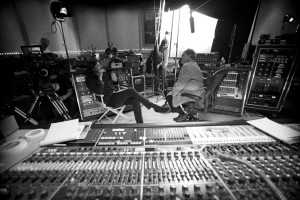By Chan Mon/reporter

Photo courtesy Therapy Content
Hearing the name Sound City can be amazing. It seems as though the Sound City documentary film would rock an audience. But it did not. It was like throwing money away to download and watch it.
It had a boring introduction. There were many great stories director Dave Grohl could have used to start it. But Grohl began with a man walking into a room preparing a large tape. It could chase an audience out.
Audiences must have hoped Sound City would include rocking songs and flashing lights with beautiful decorations, but it was a dumpy film talking about a dumpy studio in Los Angeles. It would trash audience’s hopes at first.
It was difficult to be interested in watching the inexperienced Grohl direct a film about an old nasty building. Even famous singers in the film said the building was terrible. Even actors said it was a headache to walk into the building underneath the Sound City sign. They said it was trashy, and everything was secondhand. One hour and forty-seven minutes seems too long.
The chronological film is not about the modern-day fantasy stuff. It was all about old-age recording material and old-aged singers. They talked about themselves and their lives from the studio. They still use old large tape for recording. Everything is manual, and all people have to play live to make a record.
There is no computer, but it is about the life of a studio where a lot of artists were born from the stone-age equipment. Tom Petty, Fleetwood Mac, Rick Springfield, Cheap Trick, Fear, Nirvana, Nine Inch Nails and Halford are stars that came from this studio.
It was unbelievable that such a messy building was home to so many stars and interesting people. It became a challenge for Sound City to survive when modern technology like Pro Tools and Sound Tools make recordings easy to edit with a computer.
The film shows the ups and downs in the life of a studio that stopped doing commercial recording in 2011. A lot of things to this studio are better than technology. It was where artists combined their heartbeats and shared the same feelings to make a song although they were frustrated to play live repeatedly.
Even though the film could have been better emotionally, teamwork and real-life recordings produced more than a hundred great albums, and this film would inspire audiences by exposing the hidden story of artists at work.




























